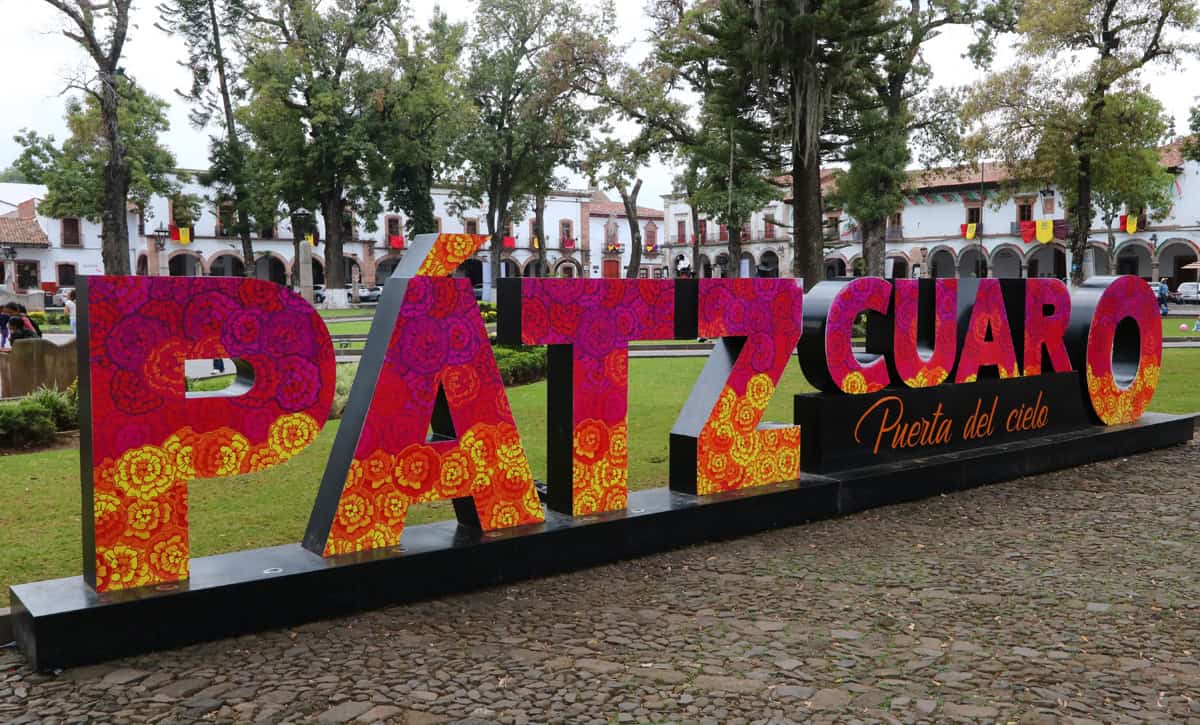
The Pueblo Magico town of Patzcuaro
Updated July 2024 after a 2nd visit to Patzcuaro
Located in the state of Michoacán, Patzcuaro is one of 177 “Pueblo Magicos” (Magical Towns) designated by Mexico’s Tourism department. The designation is meant to promote towns around the country that offer visitors a “magical” experience by reason of their natural beauty, cultural riches, or historical relevance.
I’ve done a previous post on Mexico’s Pueblos Magicos and Patzcuaro seems to be everyone’s favorite Pueblo Magico. On our 2nd visit, we’ve noticed that the town has gotten more popular and more lively than ever, especially on weekends. It’s not just the town itself, there are a lot of things to see and do in the vicinity – the countryside around Patzcuaro is very pretty and has lots of historical and cultural highlights.
This post will cover:
- An overview of Patzcuaro
- The Highlights of Patzcuaro
- What to See around Patzcuaro (Lake Janitzio, Tzintzuntzan, and the Artisan villages)
- Where to stay in Patzcuaro
- Where to eat/drink in Patzcuaro

What makes Patzcuaro special? Well, the first thing that you’ll notice is how homogeneous buildings are: 1 or 2 stories high, with red tile roofs, painted in white with red trim along the bottom of the walls. Each building has stylized lettering, in red and black, describing the nature of the businesses inside. Even street signs are drawn on the walls in red and black. You won’t see ugly signs or placards in Patzcuaro. You’ll also see lots of churches, porticos, arches and courtyards dating back to the Spanish.
.
You can’t help but feel like you’ve stepped back in time in Patzcuaro.
Patzcuaro is not a big place and everything revolves around the main square, named Plaza Vasco de Quiroga (also called Plaza Grande). Many of the town’s restaurants and cafés are located under the portico-ed buildings around the square and it’s a great spot to sit down with a drink and watch local life.
There’s always something going on around the square, especially on weekends. During our most recent visit we saw dancing, a fashion show, and the Noche de Animas (Night of the Souls) celebration where locals offer food, flowers and decorations to the dead. Many of the buildings around the square have art galleries where you can see and buy local art.
There are also a bars and restaurants, although the ones I recommend are just off the square. I’ll cover that further below as well.

.
Highlights of Patzcuaro
Patzcuaro is the kind of place where you wander around, sit on squares and go to markets. There’s no one sight that will leave you breathless, altogether however they add up to a lot of things to see in such a small place and will leave you appreciating the history and how it’s been preserved. More importantly, Patzcuaro feels like “the real Mexico”. It – and the surrounding area – are famous for its indigenous culture and arts and crafts. People come here from all over Mexico to buy its textiles, copper works, pottery, baskets, and wood work (more on that further below).
For now here are a few sights in the town of Patzcuaro itself.
El Templo del Sagrario (Temple of the Tabernacle)
It’s one of the most impressive buildings in town, a great example of Spanish colonial architecture. It was built starting in 1693 and took two centuries to complete. The church as some point was named the Temple of the Nuns, then the Sanctuary of our Lady of Health (because the image of the virgin of Health stayed here for almost 200 years). Today it’s just known as El Sagrario.
Iglesia de la Compañía
Located right next to El Templo del Sagrario is this church which was Patzcuaro’s first Cathedral. It was built between 154 and 1546. I’ll be honest…it’s pretty sombre inside compared to many of the beautiful colonial buildings in town. But still worth a visit because of it’s historical significance.

Basilica of Nuestra Señora de la Salud
Very close to the above Iglesia de la Compañía and Templo del Sagrario, the Basilica of Nuestra Señora de la Salud is the most important church in town and holds the remains of Vasco de Quiroga, the first Bishop of Michoacán (you’ll see a large statue of him in the main square, also named after him). The Basilica’s interior is very impressive
Casa de los Once Patios
Patzcuaro’s most popular tourist site is the Casa de los Once Patios (House of Eleven Courtyards). It is a complex of courtyards and shops that today make and sell local crafts – but in the 1700’s it was a convent for Dominican nuns that grew to include 11 courtyards (there are 5 existing today). It is a great spot to do some shopping.
Plaza Chica
The town’s 2nd major square is Plaza Gertrudis Bocanegra, also called the Plaza Chica. You’ll see lots of locals sitting in the shady park (as well as dogs scratching themselves). On one side of the plaza you’ll see what used to be a church (the Ex Temple of San Augustin) which is now the Gertrudis Bocanegra library.
Update: The whole square is presently (and temporarily) the site of the Market. It’s unfortunately made the square really ugly, with stalls occupying the entire square as well as the buildings surrounding it.
The photo below (from my first visit) shows the square without all the current market stalls.
The highlight on the square is the Gertrudis Bocanegra library which, since 1936, is the public library in Patzcuaro. You can find it behind the current placed tin stalls and should give it a visit, it’s an impressive building. But what it’s most known for is the huge mural by Juan O’Gorman depicting the history of Michoacán (completed in 1942, it shows the life of the indigenous Purépecha and their way of life prior to and after the Spanish conquest).

Parroquia del Santuario de Guadalupe
Interesting story about this church – the building of it was organized by a Cuban man who had once been a slave. Freed, he made a fortune in Patzcuaro and, having made a promise to the Virgin de Guadalupe, had this church built in her honour in the early 1800’s.
Here I witnessed something I’ve never seen: a man ringing the church’s bells from outside the church.
Market on Plaza de San Francisco
Worth visiting on Fridays (only on Fridays) is the market on Plaza de San Francisco. Indians from the surrounding area come into Patzcuaro and sell their pottery and baskets. Really unique stuff and very inexpensive.
Museo Local de Artes e Industrias Populares
A very good museum covering the history and culture of the Purépecha people. It’s not a huge museum and won’t take much of your time, but you’ll leave with background on the region and its people. And the building – and ruins behind it – definitely make it worth the visit. See the official website.
But, as I said above, the thing to do in Patzcuaro is wander the little streets and enjoy the colonial architecture and small town feel of this beautiful Pueblo Magico.
A few more images taken while walking around Patzcuaro.
What to See around Patzcuaro
1. The Island of Janitzio
There’s lots to see around Patzcuaro starting with the lake, Lake Patzcuaro. The most popular activity is visiting the island of Janitzio, recognizable by a huge statue (40 meters) of José María Morelos, a Mexican catholic priest and rebel leader who organized the Mexican war of Independence against the Spanish.
More here on Visiting Janitzio Island
2. The Pueblo Magico town of Tzintzuntzan
The town of Tzintzuntzan is a highlight in the region, a town with old Mesoamerican pyramids, old churches and a fantastic Franciscan convent visited a few years back by the Queen of Denmark (There’s a Danish connection here: a former Danish prince, a heir to the throne, turned to the priesthood and served in this convent where he fought for the rights of the indigenous – managing in the process to piss off Vasco de Quiroga, the man who Patzcuaro’s main square is named after).
.
3. The Artisan Towns around Patzcuaro
All around Patzcuaro are artisan towns that specialize in different crafts. One of the things Bishop Quiroga did, in the 1500’s, was to gather the scattered indigenous people into towns and assign each its own task. Even today, you’ll have towns that specialize in mask making, copper work, basket weaving etc (an interesting post on the history of the colonial craft towns here).
Which to visit:
Santa Clara del Cobre – for copper and handmade jewelry
Paracho – for toys and musical instruments (including guitars)
Capula – for the “Catrinas” which are famous throughout Mexico
Santa Fe de la Laguna – Pottery and earthenware
Tzintzuntzan – Ceramics
Ihuatzio – Woven Reeds
Sanabria – Embroidery
San Bartolomé Cocucho – giant pots
Tocuaro – dance masks
There are more. This post covers most of them.
A few photos from Santa Clara del Cobre which specializes in copper products and handmade jewelry
Where to stay in Patzcuaro
I usually always stay in Airbnb apartments. But Patzcuaro is small and I wasn’t impressed by the apartment choices. Instead we stayed in the Hotel Casa Encantada which has a suite with 2-bedrooms. It was fantastic. Opened up by a very inspiring Australian/American woman, it is both a gorgeously restored colonial buildings as well as an art gallery in one (Victoria has actually painted or sculpted most of the work hanging in the rooms and the huge common space).
.
Have a look at their website for more.
Read the interview we did with Victoria: The life of a hotel owner in Patzcuaro (Mexico)
Where to Eat and Drink in Patzcuaro
We have a few, but not many, favorites in Patzcuaro.
Restaurante Lupita. Our favorite spot in Patzcuaro for a meal. It’s off the main square, so it’s much more affordable. Really enjoyed the Arrachera steak. They have good fish options (salmon and trout). Their Margaritas are excellent.
La Surtidora. On the main square, every time I’ve come to Patzcuaro I’ve come here for a Margarita. Great place to watch all the action on the square and their margaritas are excellent here too. The food is also good but you’ll pay more than at Lupita’s.
La Casa del Gigante. On the main square, they have very good (although not inexpensive) pizzas. Nice atmosphere.
Loretta café Colonial. We’d come here for a coffee and a sandwich, very good.
Chocolate Don Jenaro. Excellent chocolate, churros and coffee. But they also have a menu with sandwiches and other items.
La Terraza. Right across from Hotel Casa Encantada is this building with a beautiful courtyard. Inside they serve good drinks and food. All very cozy and the prices are good

.
Summary: Patzcuaro really is a very pretty, genuine town with a lot of colonial history and lots of life. It’s a romantic kind of place for a couple’s getaway. Outside town there’s lots to see with Lake Patzcuaro and Janitzio Island, Tzintzuntzan and the artisan towns. It’s a great town to visit for a few days or even longer.
Related: 30 photos showing you why you should visit Morelia
Related: A roadtrip through Mexico’s most beautiful towns and cities (by bus)
Related: On Travel to Mexico – why I’m sick of the ignorance
Ps. If you find our blog helpful, please consider using our links to book your flights, hotels, tours, and car rentals. Have a look at our Travel Resources page.


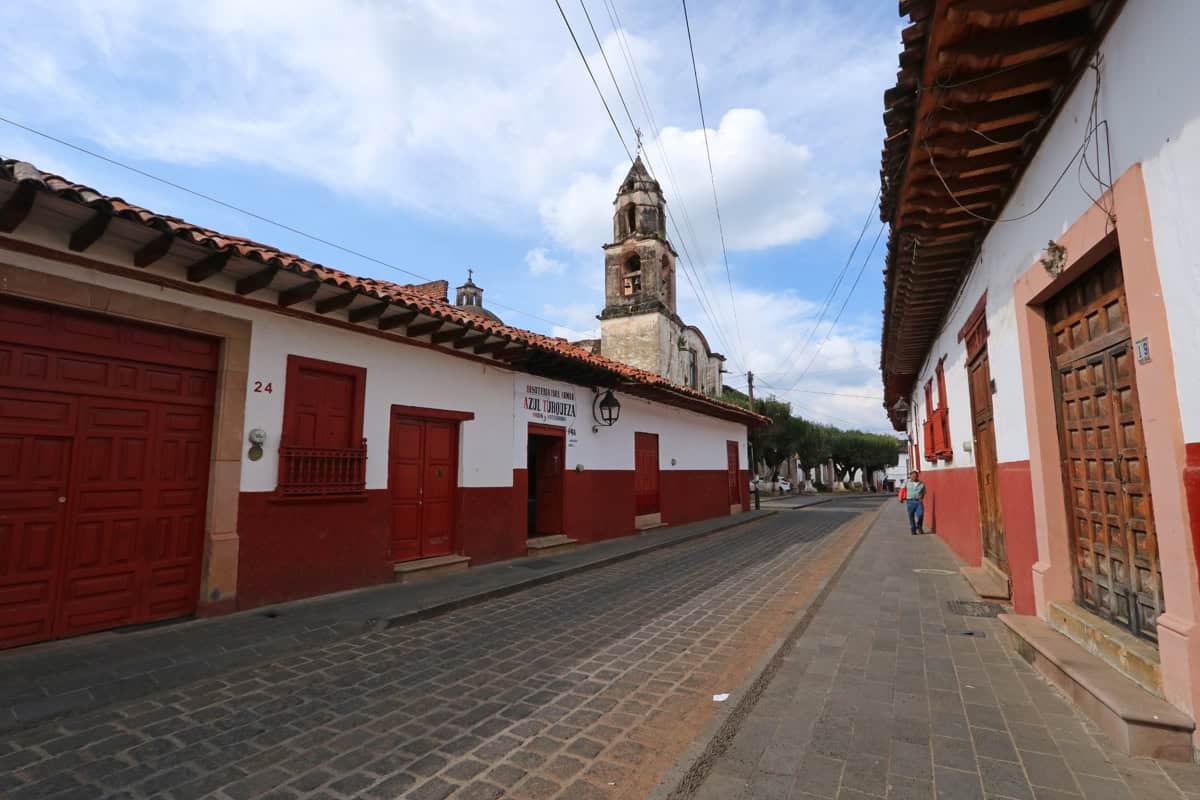



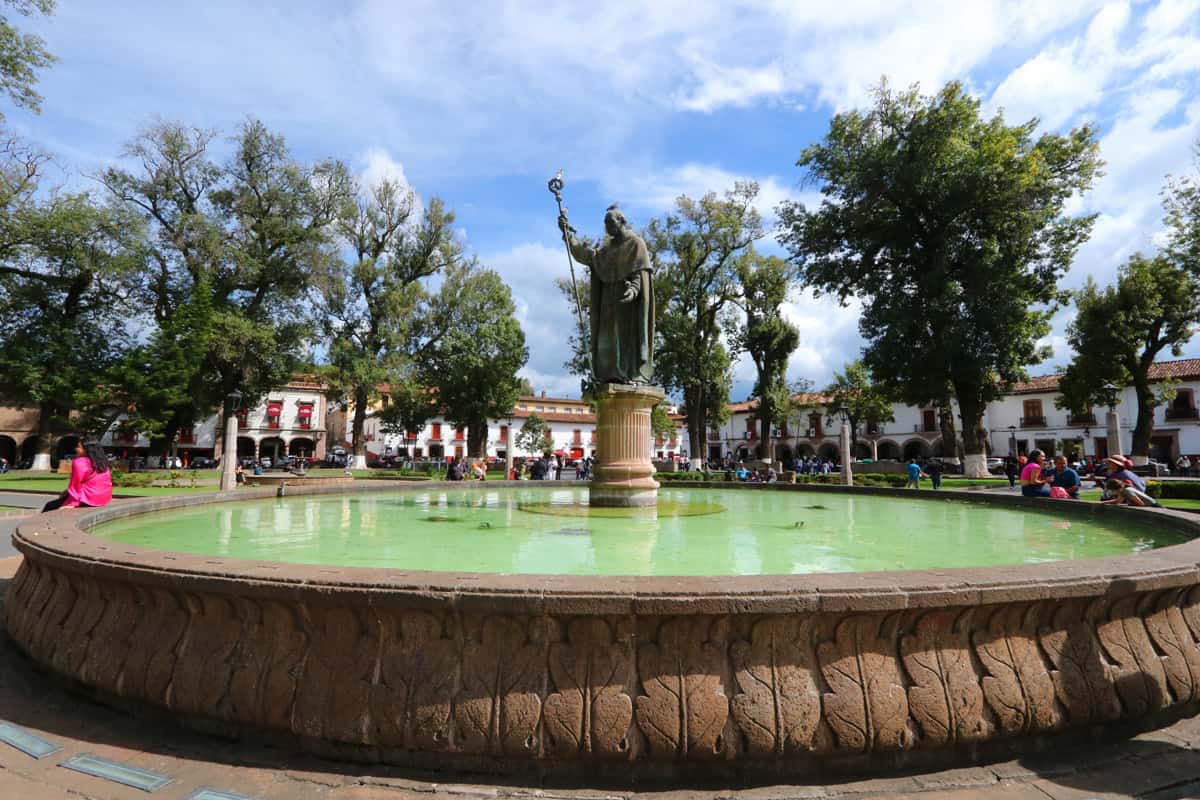
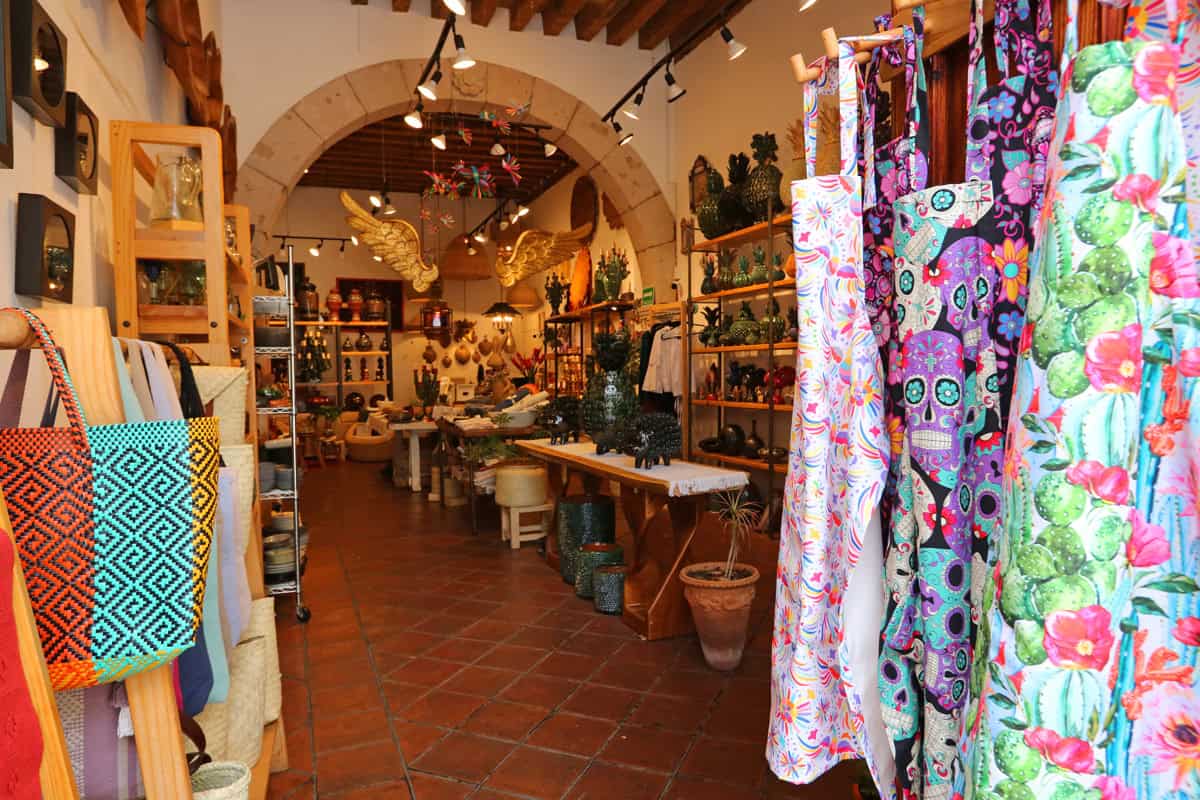
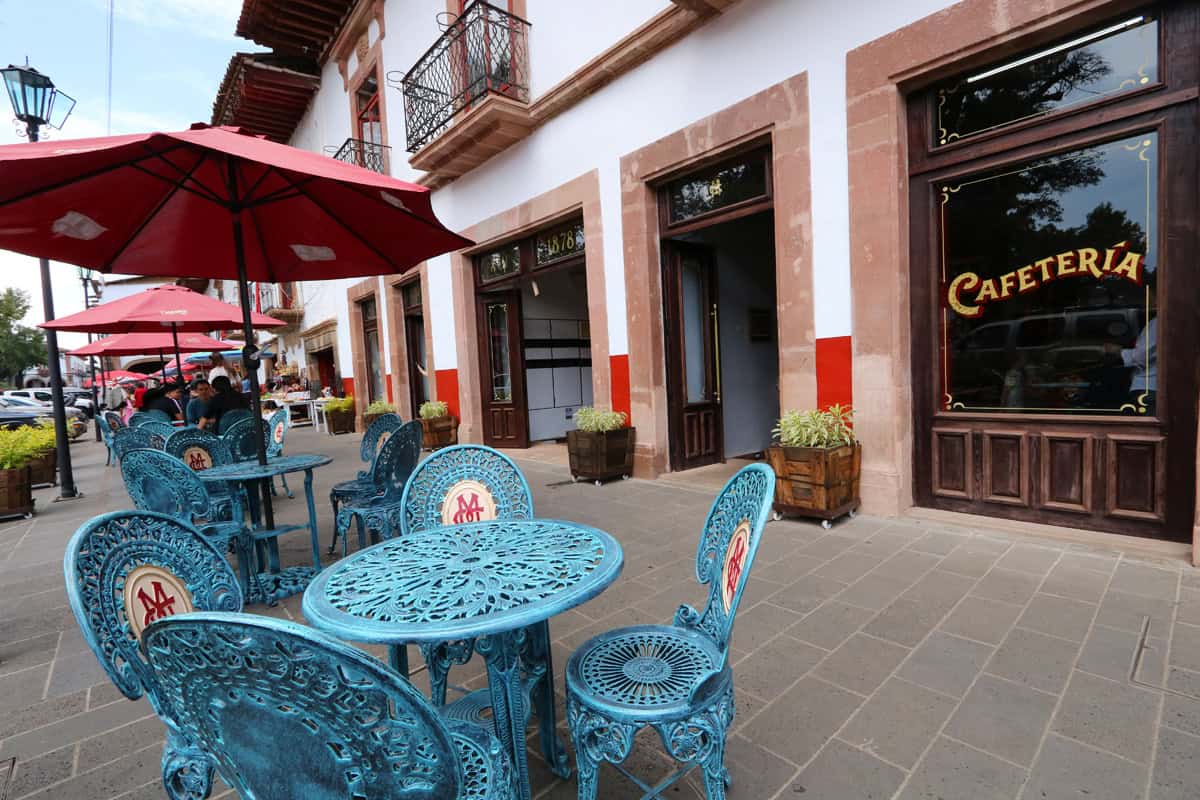



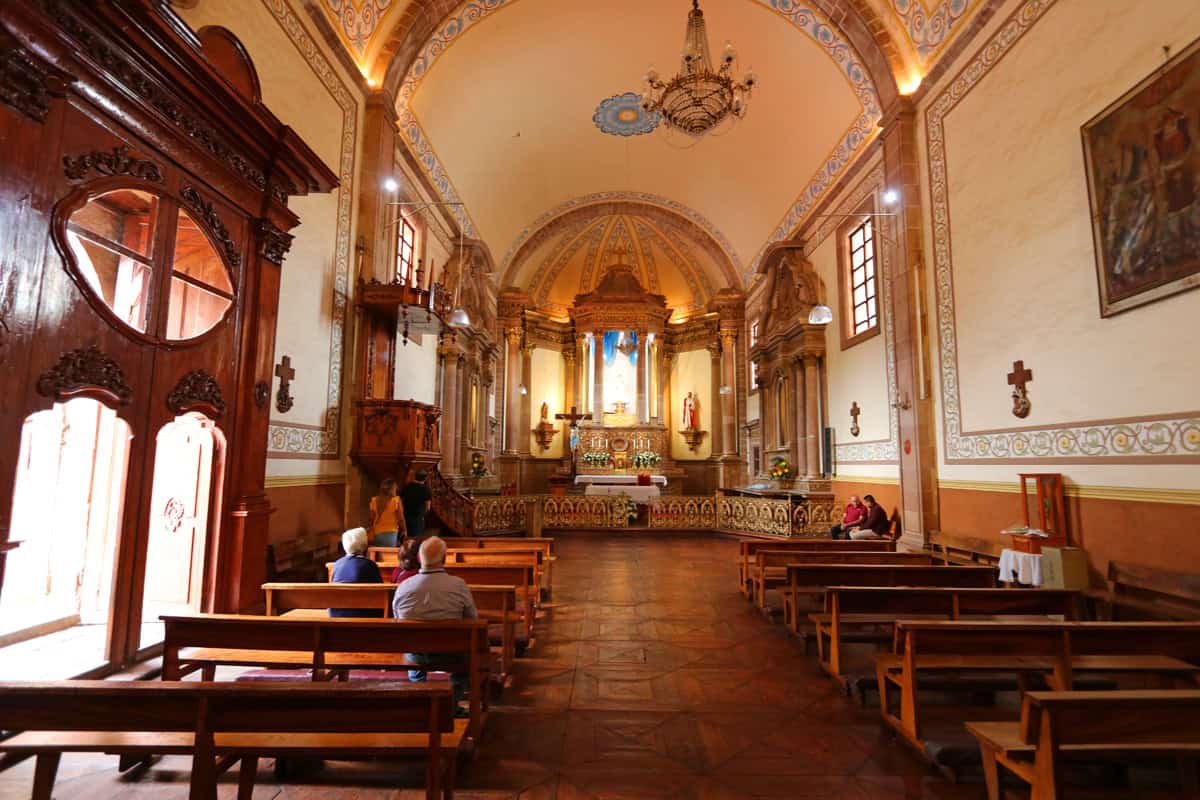

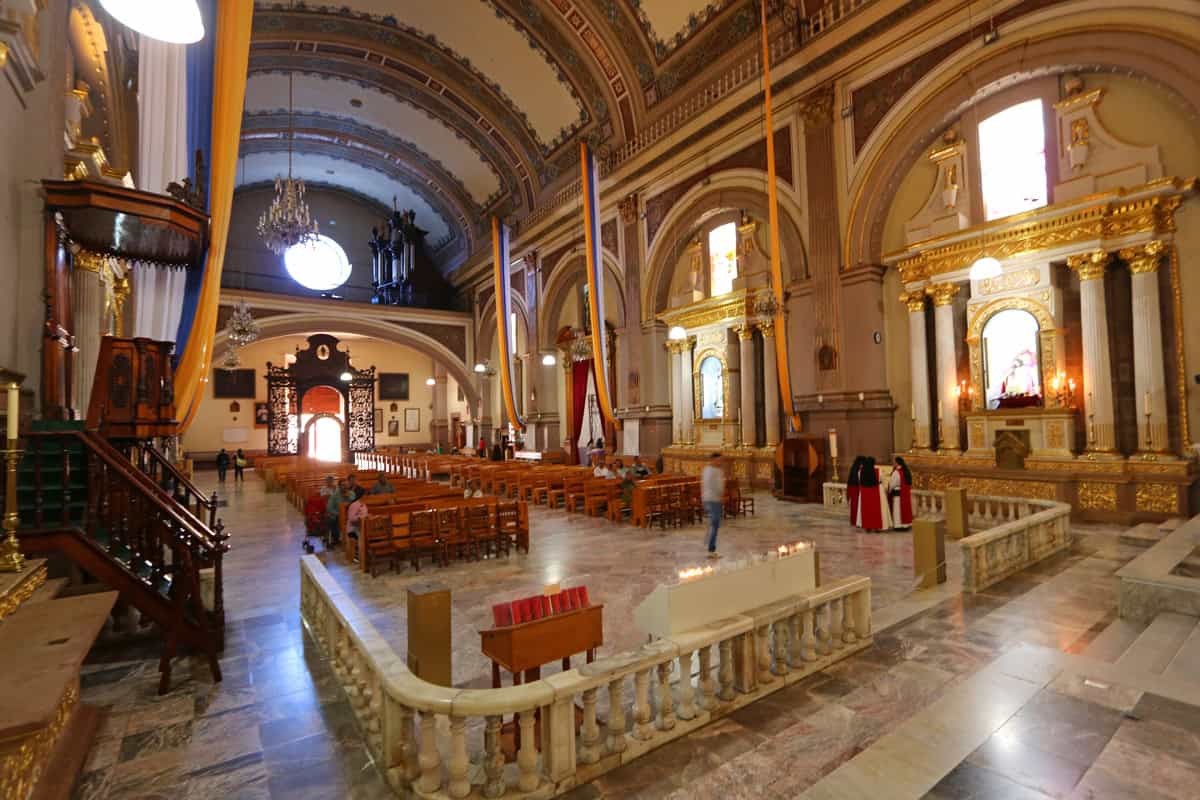


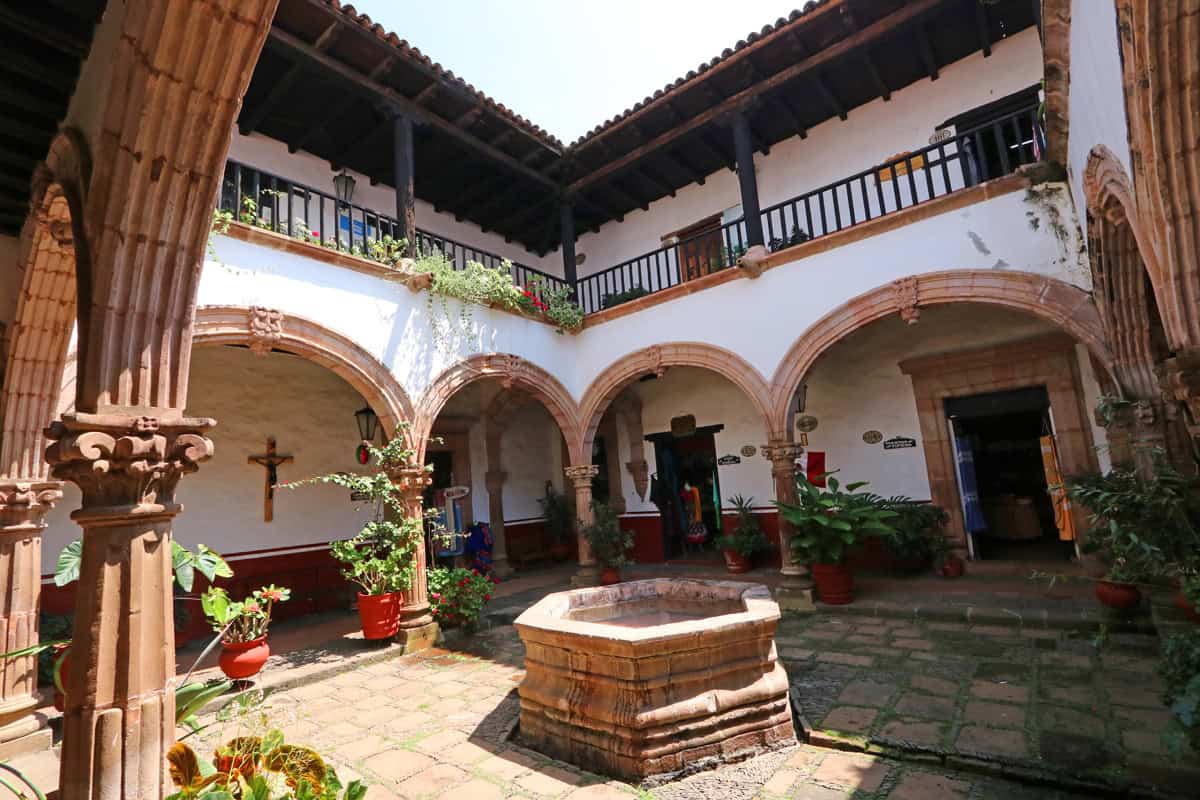






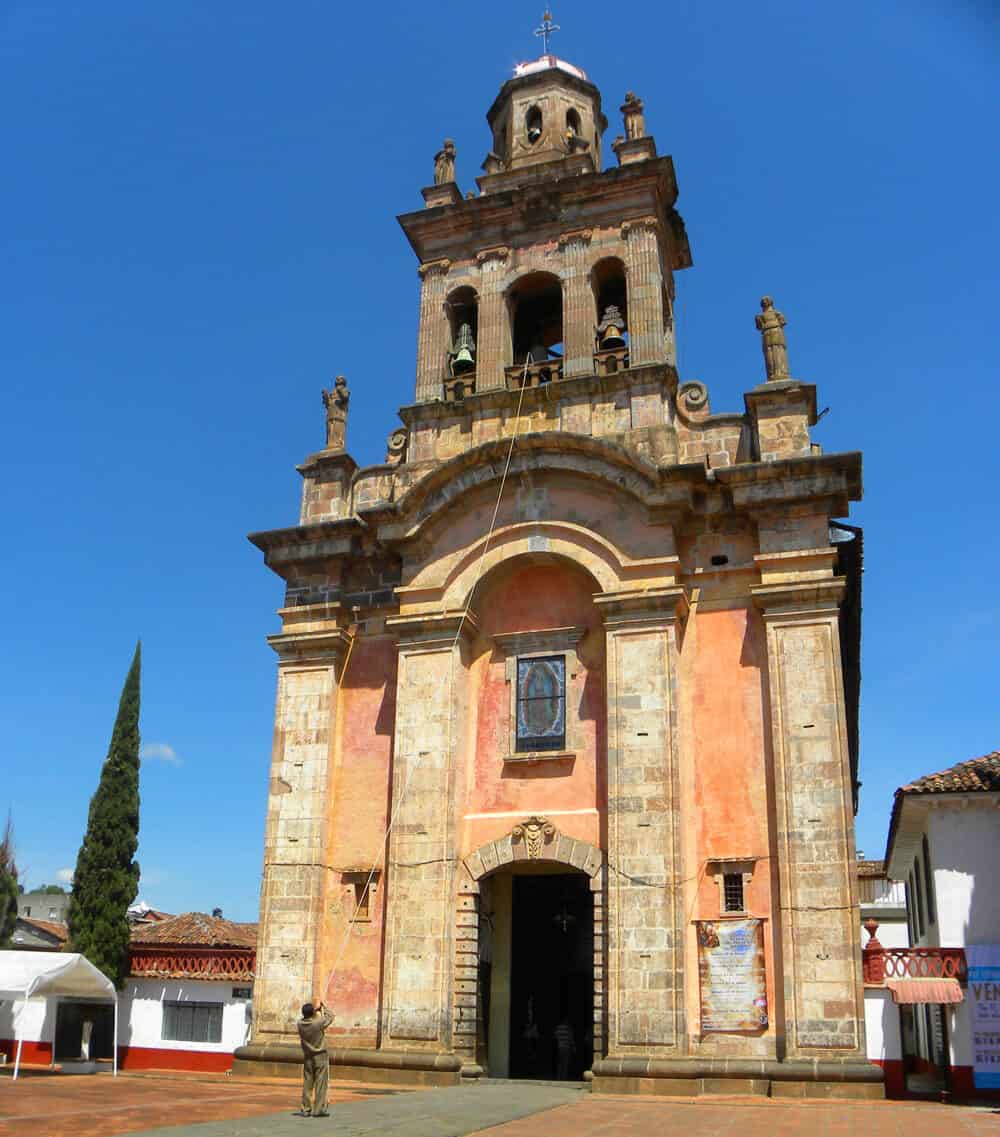




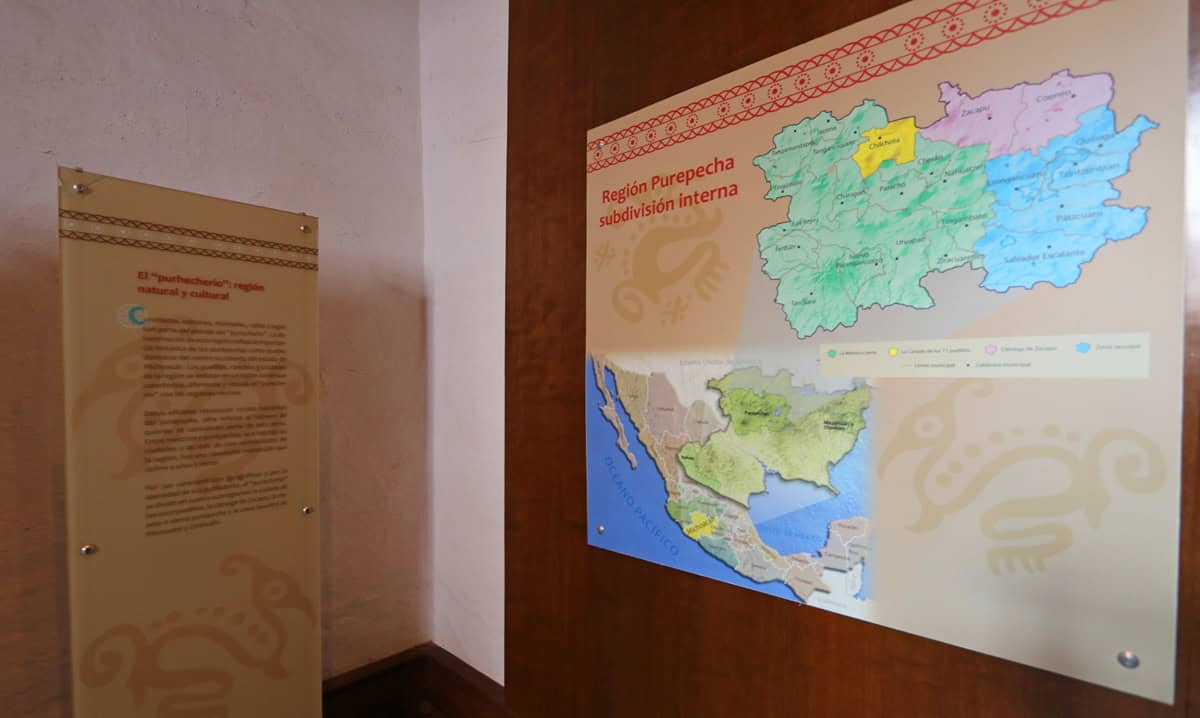
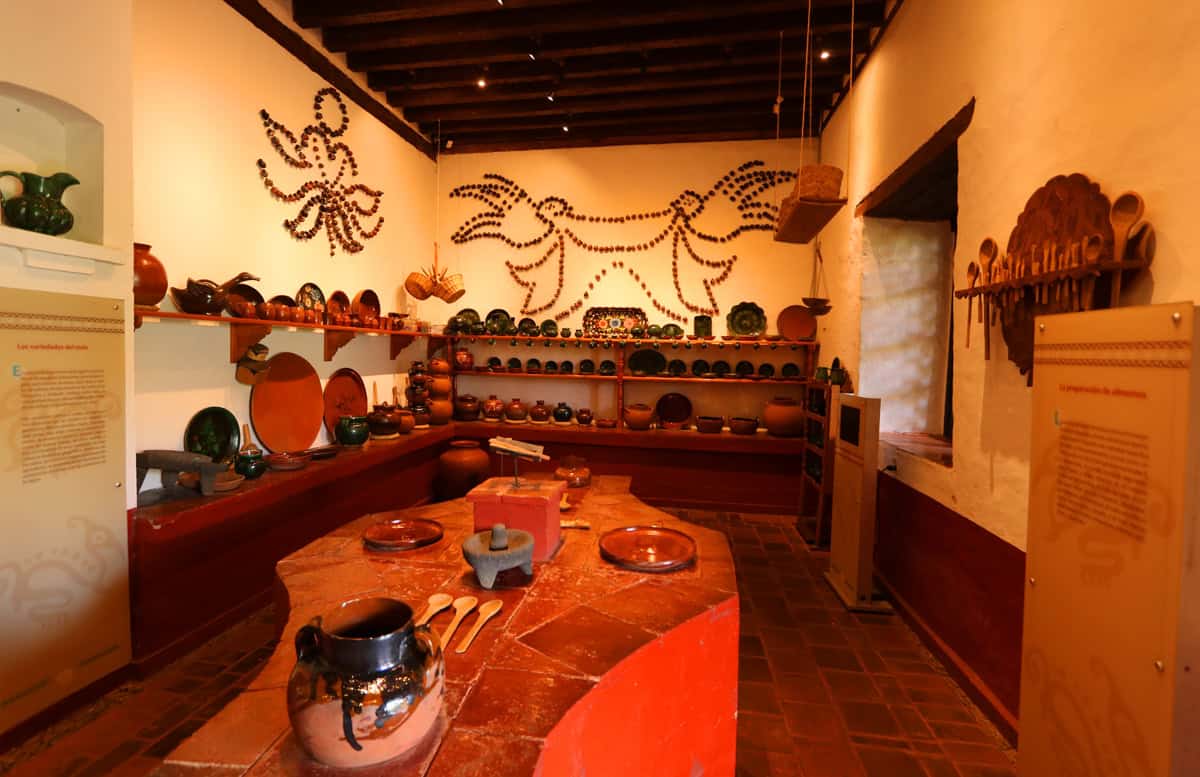















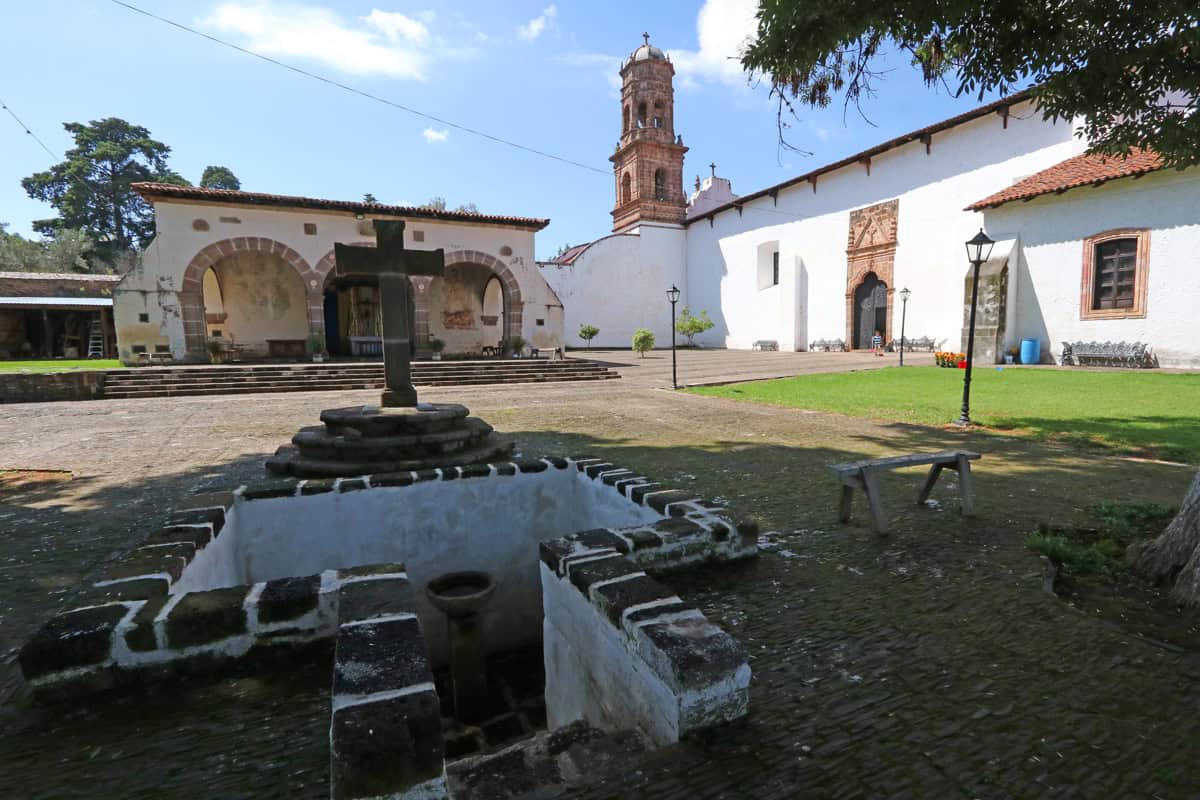



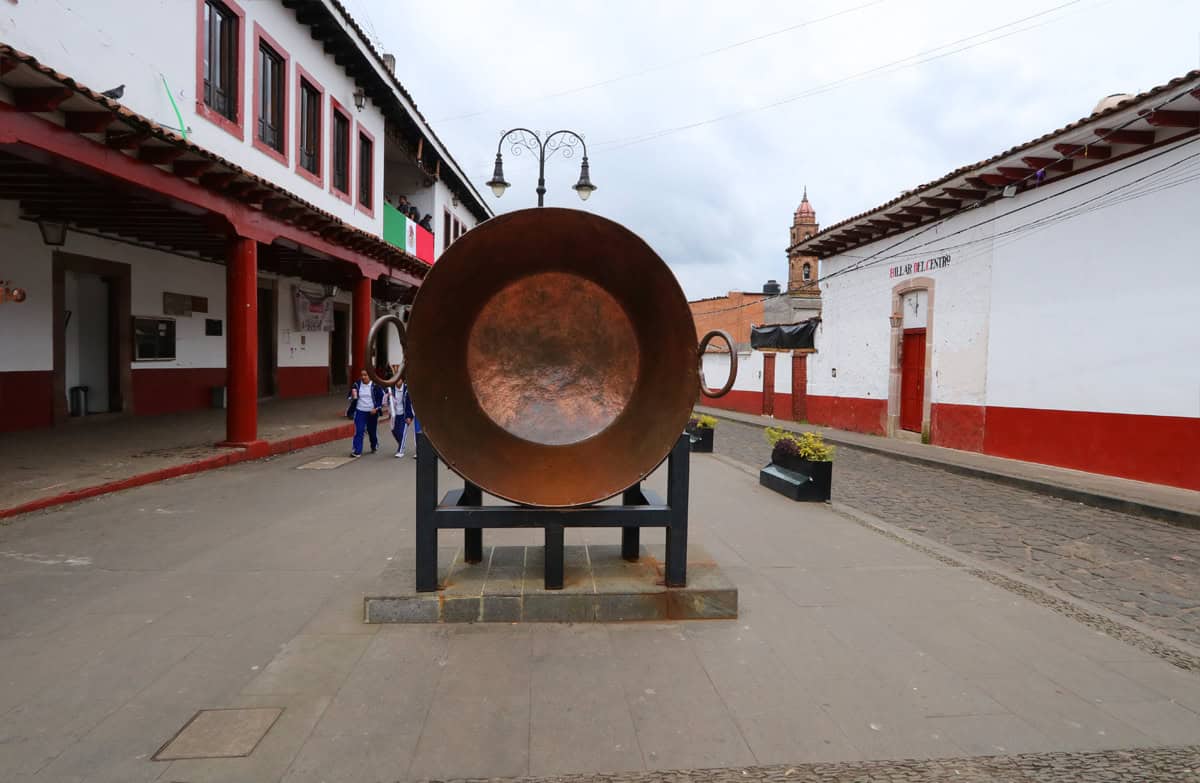



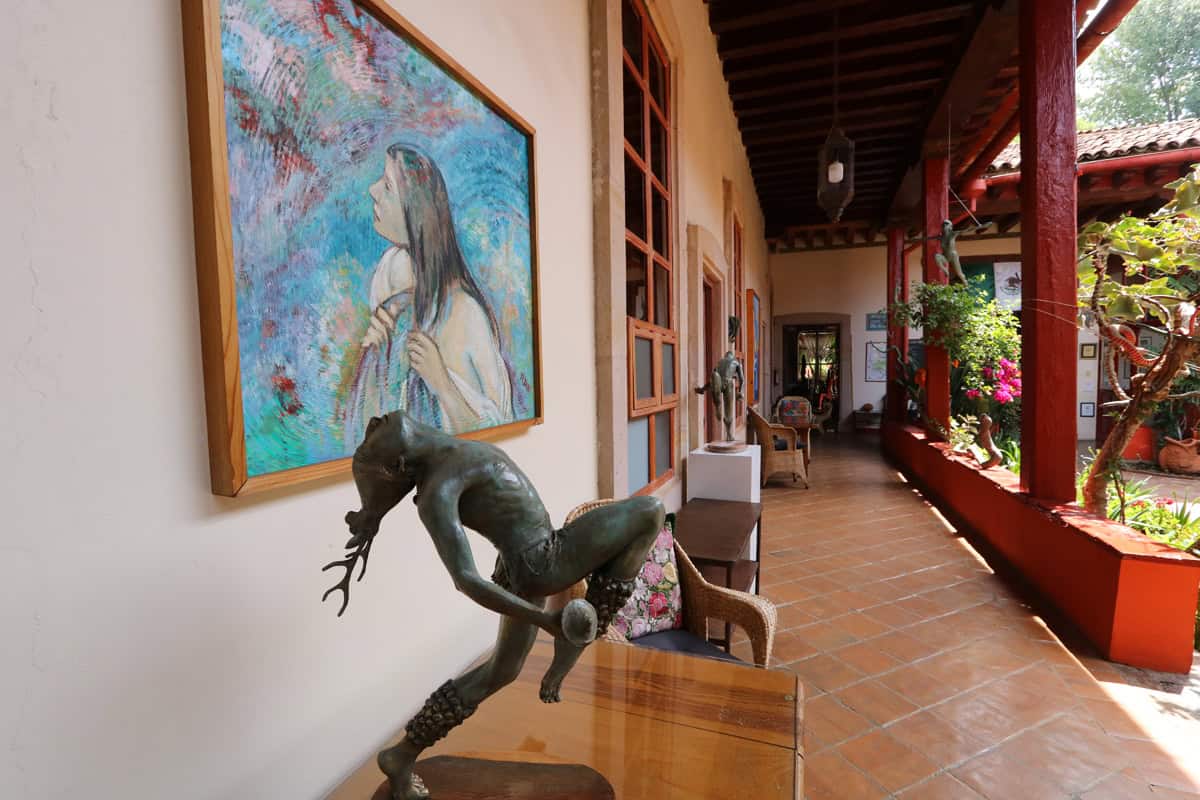





Beautiful coulourful pix Frank – I find so many of the ‘centros historicos’ of Mexican (but also a lot of other Latino countries’ ) towns and cities to be the attraction and essence of the culture. The Spanish colonial towns and cities – all planned and built on the ‘grid’ street system with their central plazas (almost always ‘de Armas’ …) with church/cathedral , government/municipal buildings etc – and usually a market close by – is what makes them ! The central plaza being the magnet for all social, community and political activities , festivals and celebrations. The overall homogeneity of style, design, building height etc adds to the overall attractiveness and beauty of the whole, despite the underlying ‘sameness’ – while arches, arcades, colours and decoration provide for some individuality and specific beauty (as is apparent with Patzcuaro , or in my experiences with cities like San Cristobal de las Casas, (Chiapas), Izamal (aka ciudad amarilla) (Yucatan) etc
The urban design (inherited largely from the Romans) was used by the Spanish throughout Latin America with great success – and it still holds up beautifully today. We have the odd city in the western hemisphere that reflects the ideal behind and concept of Spanish urban planning – like Savannah (Ga) – but nowhere was it more widespread and successful than in Hispanic America. Applied to smaller towns or larger cities (eg:- Lima, Arequipa have incredibly beautiful centro-historicos…) its what makes the places so attractive, pleasant and inviting. (Unfortunately, the modern ‘cinturons de miseria’ that surround so many of the ‘centro-historicos’ are something else entirely … urbanisation at its very worst !
Thanks for that Tony, you are so very right.
You wonder, if it wasn’t for historical old cities (whether Spanish colonial as in Latin America or anywhere in Europe) what kind of ‘modern’ architecture we would have. Especially in the developing word. I think the ‘cinturon de miseria’ would basically be everything/everywhere. How depressing that would be. Thank god for the architecture of past centuries because most in the world would just be a collection of modern slums…
Thanks so much for this! We are considering our first non-coastal visit to Mexico, and this looks like the perfect spot. We are definitely inspired – tiny margs and all!
All the places I’ve been in Mexico are non-coastal 🙂 So many beautiful places and if you have a chance would recommend you also visit Guanajuato and San Miguel de Allende.
Mexico is gorgeous.